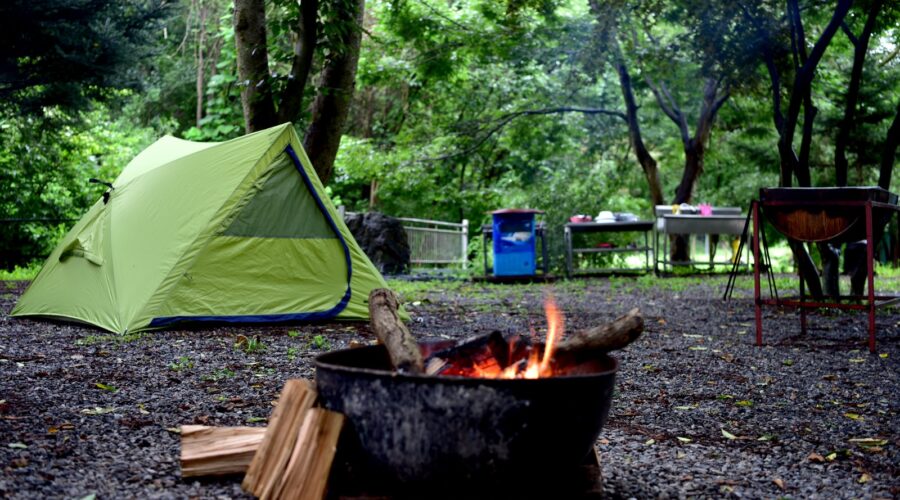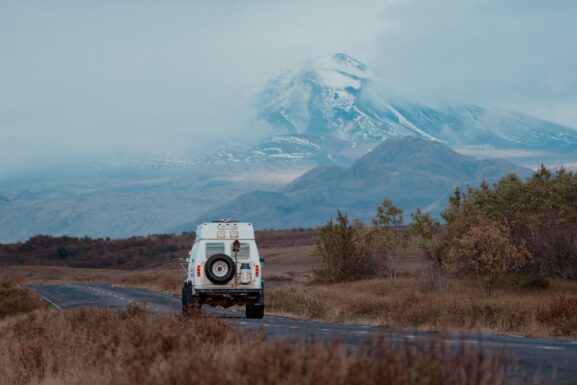How to select an Overlanding & Camping spot in India?

Selecting an overlanding and camping spot in India requires careful consideration of various factors to ensure a safe and enjoyable experience. Here are some steps to help you choose the right spot:
Research Destinations:
India is a vast and diverse country with plenty of scenic spots for camping and overlanding. Start by researching different regions and destinations that appeal to you. Consider factors like terrain, weather, accessibility, and nearby attractions.
Check Local Regulations:
Before finalizing a spot, check local regulations and permits required for camping and overlanding in that area. Some places might have specific rules and restrictions that you need to be aware of to avoid any legal issues.
Safety and Security:
Safety should always be a top priority. Look for spots that are known to be safe. If you’re going to a remote location, inform someone trustworthy about your plans and estimated return date.
Accessibility:
Consider how accessible the camping spot is. Will you be driving there, and is the road suitable for your vehicle? For overlanding, you’ll need to plan your route and ensure it’s feasible for your vehicle type and capabilities.
Facilities and Amenities:
Decide whether you want a completely remote camping experience or if you prefer some basic facilities nearby. Some camping spots might have access to amenities like toilets, water sources, or nearby villages for supplies.
Environmental Impact:
Overlanding and camping can have an impact on the environment, so choose spots where camping is permitted and leave no trace of your visit. Respect the local flora and fauna and avoid disturbing the natural ecosystem.
Scenic Beauty:
One of the joys of overlanding and camping is enjoying nature’s beauty. Look for spots with stunning landscapes, scenic views, and natural attractions that interest you. Otherwise, what is the use of camping?
Weather Considerations:
India’s climate can vary significantly depending on the region and time of year. Check the weather conditions during your planned trip to ensure it aligns with your preferences and safety requirements.
Reviews and Recommendations:
Seek advice from fellow overlanders, campers, or online communities who have visited the area you’re considering. They can provide valuable insights and recommendations.
Backup Plan:
Always have a backup plan in case your chosen spot is unavailable or unsuitable upon arrival. Being flexible and prepared for alternatives will make your trip smoother.
Camping Gear and Supplies:
Depending on your destination and the facilities available, pack the appropriate camping gear and sufficient supplies for the duration of your trip.
Best way to check whether a site is fit for Overlanding or Camping in India when you reach there?
When you reach a site in India for Overlanding, there are several steps you can take to determine whether it is fit for your adventure. Here’s a checklist to help you assess the suitability of the site:
Free sites:
- Talk to the villagers nearby and check whether it is suitable for Overlanding & Camping overnight.
- Check for safety and security
- Check for water source
- Check for dos and don’ts from the villagers. They are the best guide.
- Ensure you interact with the villagers and build a nice rapport with them.
- Observe the terrain and assess whether it is suitable for Overlanding.
Eg., Check for rough roads, steep inclines, river crossings, and any potential obstacles that might be challenging for your vehicle.
- Check with the villagers whether there is any animal activity nearby the campsite.
- Check with the villagers, in case of emergency if any help is required can you fall back on them?
- Check for the nearest police station and hospital in case of emergency.
- Check for the nearby shops for getting basic stuff.
Paid sites:
You don’t have any such issues as mentioned above.
- Find the water source for usage
- Check for common washrooms if available or dig a dry pit
- Check for an electric connection, if available, and also the charges if any.
- Check for food availability, if you don’t want to cook.
Some common points to keep in mind:
- Ensure you don’t play loud music and disturb the villagers nearby.
- Ensure you don’t get drunk and create a ruckus
- Ensure your toilet tent is a little away from your Overlanding Vehicle or Tent
- Ensure you always check with the villagers or the paid site whether you are allowed to cook nonvegetarians at the site. In some of the sites, due to religious reasons or animal activity, you may not be allowed.
- Ensure your used utensils are washed before sleeping and not left outside your Overlanding Vehicle or Tent. This can invite unnecessary animal activity.
- Ensure you don’t leave behind any trace of overlanding or camping at the site
- Check whether you can put up a campfire
- Look for a spot with some tree shade which will be useful during the daytime
- Carry back your own waste for a suitable disposal
Remember, Overlanding and camping are about embracing the adventure and being open to new experiences. By researching, planning, and considering the factors mentioned above, you’ll be well on your way to selecting a memorable and enjoyable spot for your overlanding and camping adventure in India.
Happy Overlanding!!!


